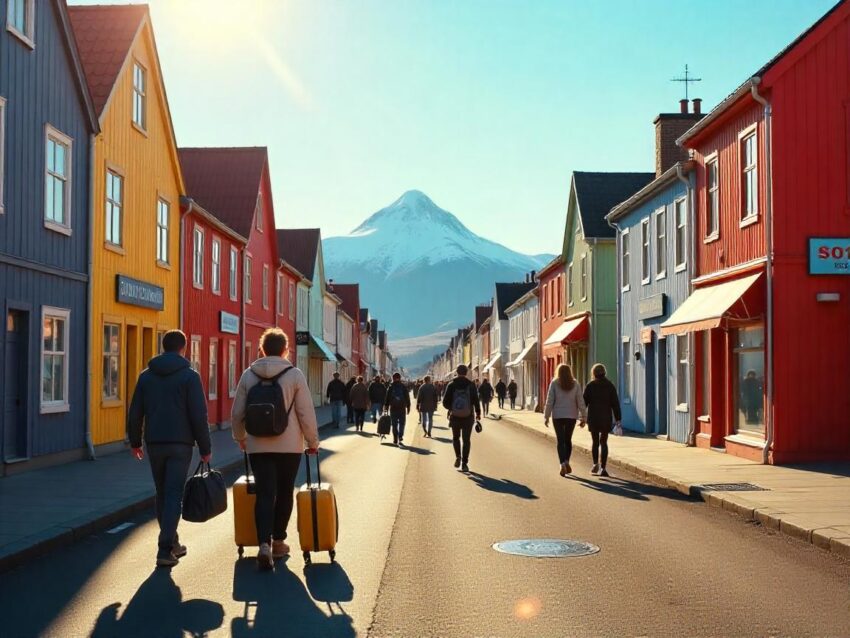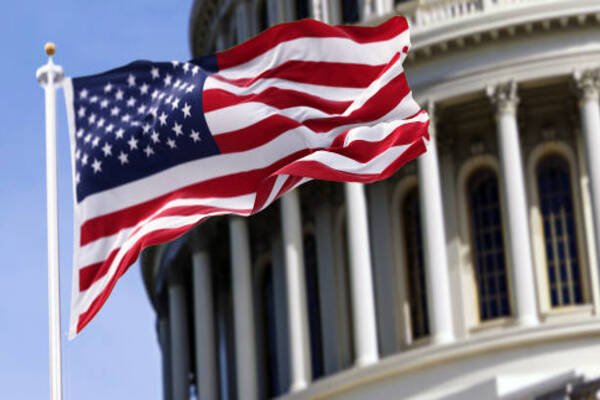
Sunday, June 29, 2025

Iceland outpaces Ireland, New Zealand, Austria, Switzerland, Singapore, Portugal, and Denmark in becoming the most peaceful country. But the US stands in one hundred and twenty eighth position. We read it all so you don’t have to.
The news crackles with tension. Iceland triumphs as the world’s most peaceful nation, while Russia plunges to last, sparking urgent shifts in tourism safety, travel trends, and global traveler confidence.
One glance at the new Global Peace Index, and you’ll feel the ground shifting beneath your feet. Iceland outpaces every rival—leaving Ireland, New Zealand, Austria, Switzerland, Singapore, Portugal, and Denmark trailing in its frosty wake. Meanwhile, the US stands shockingly low in one hundred and twenty eighth position, rattling both citizens and tourists alike.
However, this story is more than rankings. It’s about fear and hope. It’s about borders drawn in safety, and destinations suddenly shining or darkening on the traveler’s map.
Moreover, Iceland triumphs not just in statistics but in travelers’ hearts. Its quiet streets, fierce landscapes, and low crime lure visitors desperate for peace. But as Iceland claims its crown, Russia’s tumble to last sets alarm bells ringing.
As a result, the travel world holds its breath. Where can you go safely? Which routes are airlines avoiding? How are hotels reacting?
Ireland, New Zealand, Austria, Switzerland, Singapore, Portugal, and Denmark remain safe havens. Yet Iceland’s win raises the stakes, shifting tourism dollars and shaping where adventure seekers, families, and business travelers might journey next.
Meanwhile, the US stands in that startling one hundred and twenty eighth slot, fueling questions and concerns. Will travelers keep flocking to American cities? Or will they look elsewhere, lured by Iceland’s triumph and the promise of peace?
Get ready. The world is on the move. The Global Peace Index has redrawn the map. And Iceland leads the way into an uncertain, thrilling new era.
A New Map for Travelers in 2025
The travel world has woken up to a new reality. Peace has become the ultimate travel currency.
The 2025 Global Peace Index (GPI), freshly released by the Institute for Economics & Peace, has unveiled a list of the world’s safest destinations. Iceland holds its crown as the globe’s most peaceful country, while Russia has sunk to the very bottom.
This isn’t just a statistic. It’s a shift that’s rewriting travel itineraries, airline routes, and even hotel marketing strategies.
Why Iceland Stands Tall as a Traveler’s Haven
Iceland, perched on the top of the GPI for the 17th consecutive year, isn’t just a wonderland of volcanoes and waterfalls. It’s now a symbol of safety and serenity for travelers seeking peace of mind.
Low crime, political stability, and a culture built around community trust have made Iceland a beacon for tourists. As global conflicts rise, the appeal of Iceland’s quiet streets and vast open landscapes grows even stronger.
Travel businesses are banking on this. Airlines expand routes, tour companies create new experiences, and hotels emphasize Iceland’s peaceful brand. For travelers weary of uncertainty, Iceland offers not just scenery—but the luxury of feeling secure.
Europe Dominates the Top Peaceful Destinations
Meanwhile, Europe continues to dominate the GPI’s top tier. Ireland, New Zealand, Austria, Switzerland, Singapore, Portugal, Denmark, Slovenia, and Finland round out the top ten.
Countries like Ireland and Portugal are leveraging their safety reputations to attract digital nomads and eco-tourists. Cities that once lived in the shadows of more famous neighbors are seizing the moment to shine as tranquil escapes.
Moreover, peaceful countries are becoming hubs for sustainable tourism. Travelers eager for authentic experiences gravitate toward places with low conflict and high environmental stewardship. Iceland, Portugal, and Finland are leading that charge.
Russia Falls to Last Place, Triggering Travel Caution
However, the other side of the index reveals stark warnings. Russia has become the world’s least peaceful country. Conflict in Ukraine, internal repression, and rising militarization have turned Russia into a red zone for travelers and businesses alike.
Tour operators are rerouting packages, airlines avoid Russian airspace, and travel insurance premiums have skyrocketed for anywhere near the region. For an industry driven by safety perceptions, Russia’s fall marks a dramatic shift.
The travel world must adapt swiftly, as demand for Eastern European trips becomes more complicated and travelers choose alternatives.
| Rank | Country | Score | Change |
|---|---|---|---|
| 1 | Iceland | 1.095 | ↔ |
| 2 | Ireland | 1.260 | ↔ |
| 3 | New Zealand | 1.282 | ↑ 2 |
| 4 | Austria | 1.294 | ↓ 1 |
| 5 | Switzerland | 1.294 | ↓ 1 |
| 6 | Singapore | 1.357 | ↔ |
| 7 | Portugal | 1.371 | ↑ 1 |
| 8 | Denmark | 1.393 | ↓ 1 |
| 9 | Slovenia | 1.409 | ↔ |
| 10 | Finland | 1.420 | ↑ 1 |
| 11 | Czechia | 1.435 | ↑ 1 |
| 12 | Japan | 1.440 | ↑ 3 |
| 13 | Malaysia | 1.469 | ↓ 1 |
| =14 | Netherlands | 1.491 | ↔ |
| =14 | Canada | 1.491 | ↓ 5 |
| 16 | Belgium | 1.492 | ↑ 4 |
| 17 | Hungary | 1.500 | ↑ 1 |
| 18 | Australia | 1.505 | ↑ 1 |
| 19 | Croatia | 1.519 | ↓ 1 |
| 20 | Germany | 1.533 | ↓ 3 |
| 21 | Bhutan | 1.536 | ↔ |
| =22 | Latvia | 1.558 | ↑ 5 |
| =22 | Lithuania | 1.558 | ↑ 5 |
| 24 | Estonia | 1.559 | ↓ 2 |
| 25 | Spain | 1.578 | ↓ 2 |
| 26 | Mauritius | 1.586 | ↑ 1 |
| 27 | Qatar | 1.593 | ↓ 1 |
| 28 | Slovakia | 1.609 | ↑ 1 |
| 29 | Bulgaria | 1.610 | ↑ 1 |
| 30 | United Kingdom | 1.634 | ↑ 2 |
| 31 | Kuwait | 1.642 | ↔ |
| 32 | Norway | 1.644 | ↓ 8 |
| 33 | Italy | 1.662 | ↑ 1 |
| 34 | Montenegro | 1.685 | ↓ 1 |
| 35 | Sweden | 1.709 | ↓ 2 |
| 36 | Poland | 1.713 | ↓ 1 |
| 37 | Mongolia | 1.719 | ↑ 8 |
| =38 | Romania | 1.721 | ↓ 1 |
| =38 | Vietnam | 1.721 | ↑ 1 |
| 40 | Taiwan | 1.730 | ↓ 2 |
| 41 | South Korea | 1.736 | ↑ 2 |
| 42 | Oman | 1.738 | ↑ 3 |
| 43 | Botswana | 1.743 | ↓ 2 |
| 44 | Timor-Leste | 1.758 | ↑ 5 |
| 45 | Greece | 1.764 | ↓ 3 |
| 46 | Argentina | 1.768 | ↓ 1 |
| 47 | Laos | 1.783 | ↓ 3 |
| 48 | Uruguay | 1.784 | ↔ |
| 49 | Indonesia | 1.786 | ↑ 1 |
| 50 | Namibia | 1.799 | ↓ 4 |
| 51 | North Macedonia | 1.799 | ↓ 4 |
| =52 | Albania | 1.812 | ↓ 2 |
| =52 | United Arab Emirates | 1.812 | ↑ 2 |
| 54 | Costa Rica | 1.843 | ↓ 3 |
| 55 | The Gambia | 1.855 | ↑ 16 |
| 56 | Kazakhstan | 1.875 | ↑ 5 |
| 57 | Sierra Leone | 1.887 | ↑ 2 |
| 58 | Armenia | 1.893 | ↑ 10 |
| =59 | Madagascar | 1.895 | ↓ 6 |
| =59 | Bosnia and Herzegovina | 1.895 | ↓ 3 |
| 61 | Ghana | 1.898 | ↓ 3 |
| 62 | Chile | 1.899 | ↔ |
| 63 | Kosovo | 1.908 | ↓ 3 |
| =64 | Serbia | 1.914 | ↓ 1 |
| =64 | Zambia | 1.914 | ↑ 1 |
| 66 | Moldova | 1.918 | ↓ 2 |
| 67 | Uzbekistan | 1.926 | ↑ 2 |
| 68 | Cyprus | 1.933 | ↓ 1 |
| 69 | Senegal | 1.936 | ↑ 5 |
| 70 | Liberia | 1.939 | ↑ 6 |
| 71 | Malawi | 1.955 | ↑ 14 |
| 72 | Jordan | 1.957 | ↓ 2 |
| 73 | Tanzania | 1.965 | ↑ 8 |
| 74 | France | 1.967 | ↓ 5 |
| 75 | Paraguay | 1.981 | ↑ 2 |
| =76 | Nepal | 1.987 | ↑ 8 |
| =76 | Angola | 1.987 | ↑ 11 |
| 78 | Kyrgyz Republic | 1.988 | ↑ 5 |
| =79 | Tajikistan | 1.996 | ↑ 10 |
| =79 | Dominican Republic | 1.996 | ↑ 6 |
| 81 | Tunisia | 1.998 | ↓ 3 |
| 82 | Equatorial Guinea | 2.004 | ↑ 15 |
| 83 | Bolivia | 2.005 | ↓ 10 |
US Drops Lower, Raising Concerns for Domestic Travel
Meanwhile, the United States has slipped further down the GPI, landing at 128th place. This ranking places the U.S. below countries like Bangladesh, South Africa, and Kenya.
It’s a troubling sign for domestic tourism, as travelers weigh safety even within America’s borders. Major cities remain global attractions, but rising concerns about social unrest, gun violence, and political polarization weigh heavily on traveler decisions.
For tourism boards and hospitality giants, the mission is clear: reassure both domestic and international tourists that the U.S. remains worth visiting.
Conflicts Ripple Across the Middle East and Africa
Beyond Russia, conflicts continue to shape travel across the Middle East and Africa. The GPI reports 59 active state-based conflicts—the highest number since World War II.
Countries like Sudan, Yemen, Afghanistan, and South Sudan remain at the bottom of the index. Tourists steer clear, and tour operators remain cautious. Meanwhile, even regions once considered stable face sudden flare-ups that can derail travel plans overnight.
However, some regions show hope. The peace deal between the Democratic Republic of Congo and Rwanda hints at potential stability in parts of Africa. But rebuilding traveler trust in conflict zones will take years—and massive investment in safety and infrastructure.
Militarization Becomes a Critical Factor
The GPI’s “Militarization” domain is driving new concerns. Countries like the U.S. and Israel score lowest in this metric. High military presence, civil unrest, and security crackdowns tarnish the image of destinations striving to attract leisure travelers.
Moreover, travelers are savvier than ever. They check peace indexes, scan advisories, and follow social media chatter before booking trips. Militarization isn’t abstract—it’s a real factor shaping hotel bookings, flight paths, and tour package sales.
Shifting Traveler Behavior and Emerging Opportunities
Amid conflict and uncertainty, peaceful destinations stand to gain. Iceland, New Zealand, and Portugal are seeing surging demand. Digital nomads, eco-tourists, and remote workers crave destinations where they can explore without fear.
Meanwhile, lesser-known spots in Europe and Southeast Asia are rising as safe alternatives. Singapore, Slovenia, and Finland are positioning themselves as both tranquil and exciting.
Moreover, sustainable travel has become intertwined with peace. Tourists perceive eco-friendly nations as safer, cleaner, and more welcoming. Iceland’s top ranking pairs perfectly with its eco-tourism leadership, creating a powerful brand for the modern traveler.
Peace as a Passport to Prosperity
As 2025 unfolds, one lesson rings clear across the travel world: peace is the new passport.
Destinations ranked high for safety and stability enjoy booming tourism, investor interest, and positive global perception. Those slipping down the index face dwindling visitor numbers, rising costs, and the hard task of repairing their image.
In the end, the GPI isn’t just a geopolitical tool—it’s a compass guiding travelers, airlines, hotels, and tour operators through a world that feels less certain every day.
Iceland may have won the top spot again, but every nation has a stake in the global quest for peace. For the travel industry, it’s a journey that could define its future—and the adventures of millions seeking safe, beautiful places to explore.
A New Global Peace Map Is Redrawing Travel Plans
Travelers around the globe are taking a hard look at their maps today. The 2025 Global Peace Index has landed, and its revelations are shaking the tourism industry to its core. Iceland has secured its crown as the world’s most peaceful country, while Russia has sunk to the very bottom of the list.
This isn’t just a ranking—it’s a compass for millions deciding where to vacation, work remotely, or invest in travel plans.
Tourism Faces A New Reality Amid Shifting Peace Rankings
Meanwhile, travel companies and tourism boards are scrambling to react. The Australia-based Institute of Economics & Peace analyzed 163 countries across indicators like societal safety, domestic conflicts, and militarization. And the results are a stark warning.
Of the nations studied, 74 saw improvements in peace, but a troubling 87 slipped backward. Overall, peacefulness dropped by 0.36 percent, marking the sixth consecutive year of global decline.
For travelers, this paints a new picture of the world. Destinations once considered safe might now carry heightened risks. And peaceful havens like Iceland shine brighter than ever for tourists craving safety and tranquility.
Iceland Stands Tall as A Beacon of Peace
Iceland sits triumphantly at the top. Its pristine landscapes, quiet cities, and low crime rates make it a magnet for visitors seeking both natural wonders and peace of mind.
Moreover, it’s not just a pretty place on a postcard. Iceland’s position fuels confidence for airlines, tour operators, and hotel chains banking on stability and predictable travel demand.
Russia Falls as Conflicts Erode Traveler Confidence
However, Russia’s fall to last place has travel advisors sounding alarms. As conflicts rage in Ukraine and ripple into neighboring regions, travel warnings grow sharper. Tourists and businesses alike are reassessing any plans tied to the region.
As a result, tour operators are rethinking routes, airlines are recalculating flight paths, and insurers are raising premiums for travelers headed near conflict zones.
Middle East Tensions Cloud Travel Outlook
Meanwhile, the Middle East remains turbulent, affecting tourism flows and aviation schedules. Ongoing tensions and sudden escalations keep travelers wary, and tourism boards are fighting to protect their countries’ images.
Yet amidst the gloom, glimmers of hope emerge. Peace deals, like the one between the Democratic Republic of Congo and Rwanda, hint at possible turnarounds for regions long off travel radars. Still, the scars of decades-long violence will take time to heal—and to rebuild traveler confidence.
U.S. Drops Further, Raising Questions for Domestic and International Travel
The United States finds itself ranked 128th, lagging behind nations like Bangladesh, South Africa, and Kenya. This low position raises eyebrows, especially as domestic travel demand surges.
Travelers craving safety might hesitate to explore certain regions at home. Meanwhile, international visitors weigh safety perceptions before booking American vacations. For the U.S. tourism sector, the challenge is urgent: reassure visitors that their journey will be safe, secure, and memorable.
Shifts in Top Peaceful Destinations Shape Travel Demand
The 2025 GPI’s top ten list remains mostly stable, with Iceland at number one, followed by Ireland, New Zealand, Austria, Switzerland, Singapore, Portugal, Denmark, Slovenia, and Finland.
However, Canada’s tumble out of the top ten sent shockwaves through the travel world. The country now sits tied at 14th with the Netherlands, triggering questions about policy changes, security perceptions, and the ripple effect on tourism marketing.
For travelers, these shifts mean new choices. Iceland and New Zealand look even more appealing. Meanwhile, destinations like Canada will need fresh strategies to reassure visitors and maintain tourism momentum.
Militarization and Conflict Impact Tourism Strategies
The report shines a spotlight on militarization. Both the U.S. and Israel ranked last in this critical domain, which has major implications for travel planning, insurance costs, and tourism confidence.
Moreover, Russia and Ukraine hold the bottom spots in the ongoing conflict category. Travelers seeking to avoid tension zones are watching these rankings closely. Airlines and tour operators are equally vigilant, rerouting flights and adjusting packages to safeguard clients.
Signs of Hope Amid The Decline
Yet all is not doom and gloom. Some bright spots emerged in the GPI report. Homicide rates fell across several regions, including parts of Central and North America. Violent demonstrations decreased. Perceptions of criminality improved.
These small victories breathe hope into the tourism industry. Destinations scarred by past violence may yet reclaim their place on traveler bucket lists. Lower violence rates can translate into renewed tourism campaigns and revitalized local economies.
Travelers Demand Safety and Authentic Experiences
Today’s travelers crave more than Instagram-worthy views. They want reassurance. They want to know their chosen destinations are safe for themselves and their families. The Global Peace Index has become a critical tool in shaping these decisions.
For tourism authorities, these rankings are a wake-up call. They dictate marketing budgets, security investments, and crisis communications strategies. Airlines, hotel chains, and travel advisors now lean heavily on such data to guide business decisions and ensure travelers feel secure.
Peace Is Now A Selling Point
As the world grows more unpredictable, peace itself becomes a powerful tourism brand. Countries topping the list can leverage that image to attract high-spending visitors, remote workers, and investors seeking stability.
Meanwhile, nations struggling at the bottom must fight a dual battle: restoring peace and reshaping global perceptions. It’s a high-stakes contest that will define tourism flows and travel trends in 2025 and beyond.
The message is clear. Peace isn’t just a political ideal—it’s a passport to prosperity in the travel industry. And as Iceland basks in its position as the world’s most peaceful nation, the tourism world watches, eager to follow its lead.
«Enjoyed this post? Never miss out on future posts by following us»







